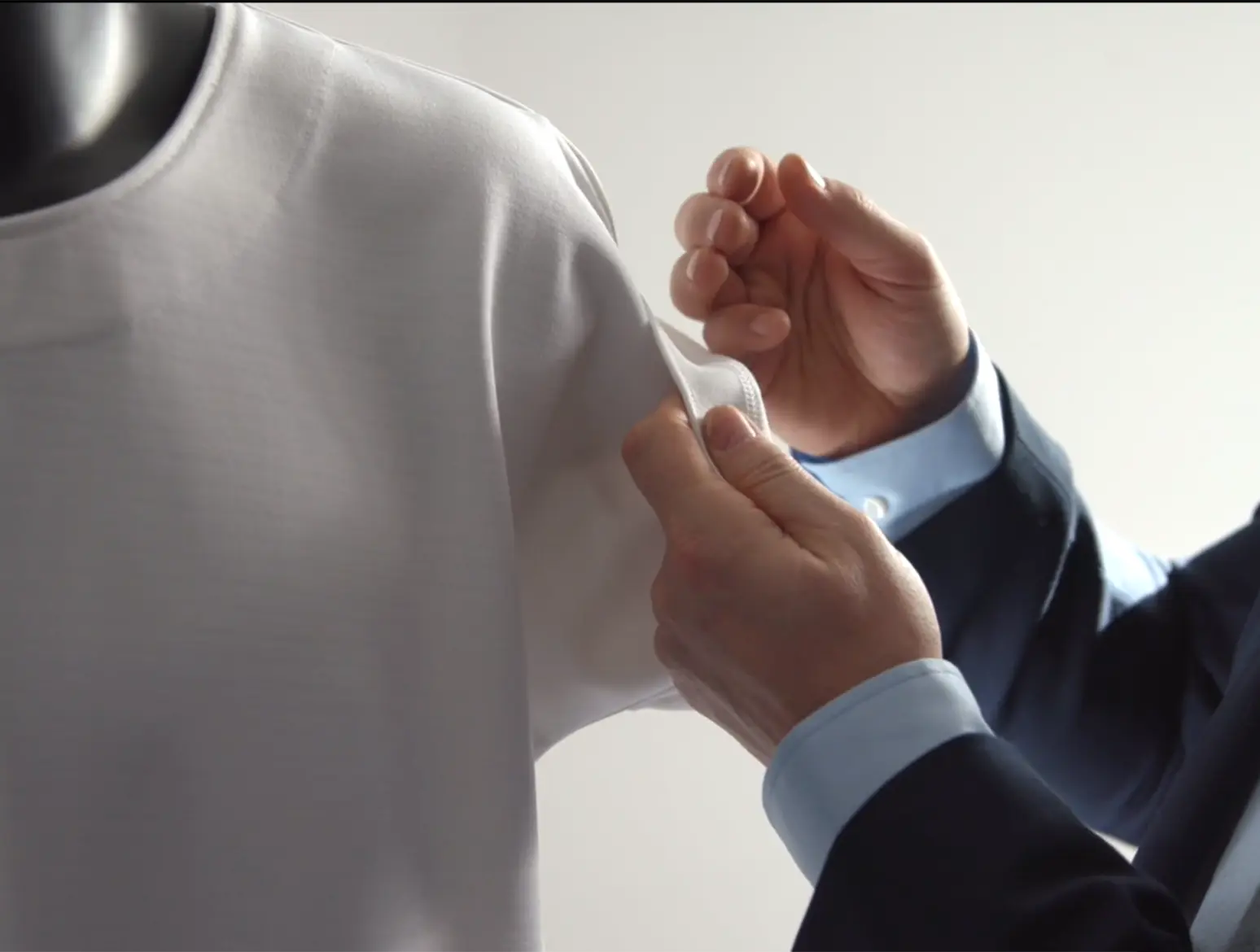Anti-ligature clothing is used to promote the safety of vulnerable and often segregated individuals, preventing incidents of self-harm and suicide, whether in psychiatric hospitals, mental health hospitals, secure care facilities, custodial settings, or any other setting where an individual might be legally placed in seclusion.
Emma Pring, a young woman, tragically took her own life on April 20, 2021, while receiving treatment at a privately operated mental health care facility. She was wearing anti-ligature clothing that, in my professional assessment, was not suitable for its intended purpose. The coroner will have been appalled at the absence of national standards regarding the production of anti-ligature clothing in the UK.
Furthermore, it is also worth acknowledging a study carried out in 2012 into cases of suicide within psychiatric wards in England and Wales. The study found that of the 448 suicides that occurred between 1999-2007, 77% were by hanging. The study highlighted the most common ligature points as doors, hooks, handles, and windows. The most common ligatures used were belts, sheets, and towels.
A further truly excellent read highlighting additional data is the 2022 National Confidential Inquiry Into Suicide and Safety in Mental Health.
The objective of this article is to explore and highlight the precise application and benefits of anti-ligature clothing.
While extensive mental health research in recent years has focused on components of quality of care, published research lacks focus on the science of patient safety, especially the safety of those placed in involuntary confinement.
At the early stage of drafting this article and when discussing this subject with some experts, it was Ross Ferguson, who highlighted to me the article: ‘Suicide and Language.’ Ross has spent almost 34 years as ‘Violence Reduction Lead’ at one of the UK’s High Security Hospitals.
This excellent article urged me to consider terms, such as “commit suicide,” “successful suicide,” or “failed suicide attempt.” According to the article, to “commit” suicide has criminal overtones which refer to a past time when it was illegal to kill oneself. “Committing suicide” was like committing murder or rape. The original negative reputation of the word may have decreased over time, but the underlying residue remains (Sommer – Rottenburg, p.239).
Then there are also phrases which paradoxically include positive terminologies when a suicide is carried through, and negative terminologies when a suicide is attempted but does not result in death. Based on that, we should consider replacing phrases, such as “completed suicide,” “successful suicide,” or “failed suicide attempt.” In this context I would welcome open discussions among healthcare professionals, to establish more suitable terminologies.

An expert’s view on anti-ligature clothing
It is of greatest importance to understand that it must be a last resort to seclude an individual. Any such restriction must be for the safest and shortest time possible. It must be no longer than necessary, and the person’s dignity and freedom of movement should remain a priority. All other methods must be tried, and great care should be taken when identifying if other options were more suitable to legally place an individual in seclusion.
Pete Turner, Principle Associate of SWC Expert Group, who spent over 31 years as Violence Reduction Lead at another High Security Hospital in the UK, pointed out there are several benefits in ensuring an individual at risk of self-harm or suicide is wearing anti-ligature clothing: “Of course, it significantly reduces the patient's opportunities to self-harm, but it will also keep the area and person sterile and make it less likely for a member of staff to have to re-enter a secure area to reengage if personal clothing has been damaged (increased likelihood of active violence, injuries and trauma etc.). It can also provide comfort and reassurance to some patients knowing that they were unable to carry out their intended acts to harm themselves, often expressed with gratitude post the prescribed intervention.”
This statement really got to me when I read it the first time. As desperate as some might appear when aiming to harm themselves or take their lives, this statement highlighted to me once again that there really is a ‘light at the end of a tunnel,’ even if many seem to be unable to see that light in moments of ‘insufferable darkness’.
However, we also must acknowledge that some individuals are driven, or influenced by unique biological, psychological, socioeconomical and environmental factors. Due to these factors, their relentless pursuit to harm themselves or take their lives can often be final.
When speaking about anti-ligature clothing, Pete Turner strongly emphasises the moral aspects, and concluded: “If used unlawfully, such clothing can be degrading, traumatic, unethical, and very damaging to the staff and patient therapeutic relationship and have no clinical function or recovery benefits. However, when such clothing is being used for the correct reasons, and with care and compassion to safely manage and reduce the observed levels of risk, they are extremely supportive of the therapeutic delivery and patients' recovery.”
“We must always be aware of the danger that if this practice is not carefully monitored and regularly reviewed, it can become a cultural and habitual blanket approach. This has the potential of contributing to the vicious cycle of violence and the internal justification for their use of restrictive responses. We must aim to reduce practises whereby the patient can become unintentionally dehumanised to ensure the safety of themselves and others.”
Key Objectives of Anti-Ligature Clothing
The key objective behind the design of such protective clothing is that it must be comfortable to wear, fire-retardant, strong, sturdy, and anti-tear to ensure that the fabric cannot be destroyed and subsequently turned into a ligature. It is essential to prevent the user from creating a long enough length of material to attach to a ligature/anchor point or from swallowing such ligature.
The overall structural strength of anti-ligature clothing is, of course, of immense importance. However, there is no question about it, ‘comfort’ and ‘wearability’ is of equal significance, as it will help the wearer’s sense of self-worth, especially when the garment is being worn over a longer period. The more comfortable such a garment is, the less severe the behavioural disturbance the person may demonstrate, and that this likely will to reduce the risk that person may represent to themselves and others.
As anti-ligature clothing is predominantly utilised in healthcare settings, it is also essential to ensure that all garments can undergo thermal disinfection. Thermal disinfection involves the eradication of infections, such as bacteria and viruses, from fabric by employing hot water. To disinfect garments effectively thermally, they must be laundered in water heated to a minimum of 71 Celsius (160 F)
This type of clothing is to be worn by potentially vulnerable, high-risk, distressed, and possibly volatile individuals. I strongly believe the more comfortable such garment, the less severe the behavioural disturbance the person may demonstrate, and that is likely to reduce the risk that person may represent to themselves and others.
Doug Melia, Director of Safer Handling, who works internationally supporting cross sector organisations on restraint safety states: “Involuntary isolation may serve as an immediate reprieve from the emotional stress of being monitored in close proximity or the trauma and distress associated with clinical holding. A patient in crisis, inclined to act without rational thought, or so determined at a particular time to hurt themselves must have access to appropriate support ensuring the right care, for the right person. Anti-ligature clothing can be such appropriate support. It can facilitate a pathway to normality for the patient, without compromising on safety or dignity.”
From the legal point, the situation is simple. Laws, rules, and regulations in all countries may, of course, vary. Nevertheless, the overall message is clear, the risk of patients, service users or inmates harming themselves or carrying out suicide must be managed and effectively mitigated.
From the moral point, the benefits for you are clear. Issuing such protective garments at the right time and for the right reasons, will give you the assurance that your professional contributions and decision making remains highly moral, ethical, lawful, and compassionate.
Personally, I am appalled by the absence of an official standard and test protocol for anti-ligature clothing. It is imperative that such standards are swiftly developed. Currently, healthcare providers are sold inferior garments lacking in quality and performance, as some manufacturing companies employ questionable tactics in their sales and marketing pitches. It is unacceptable that individuals in desperate situations are issued or compelled to wear clothing unsuitable for its intended purpose. This must cease immediately.
What is your take on anti-ligature clothing? What is your organisation doing to prevent self-harm and suicide? What else can we do together to save the lives of those in our care?
About the Author
Robert Kaiser is an expert in the prevention of workplace violence related injuries. His written work has been published in several international security and safety focused publications. He is also the Founder and CEO of BitePRO®, the world's first specialised brand of protective clothing, offering dependable scratch and bite protection for those working with individuals displaying challenging behaviour. STRONGTEX Anti Ligature Clothing is part of this company. STRONGTEX facilitates a pioneering and reliable pathway to normality for individuals involuntarily placed in seclusion, comfortably, and without compromising on the wearer’s safety or dignity.


